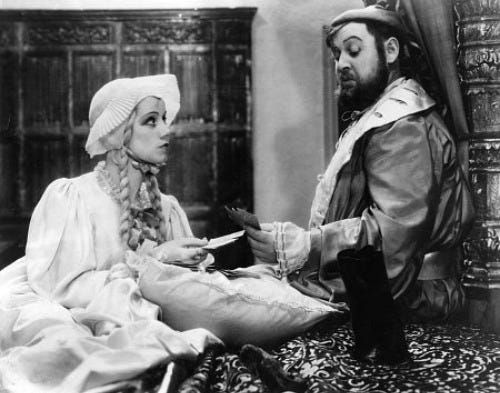The Private Lives of Henry VIII (1933)

As history, "The Privates Lives of Henry VIII" is a joke. The biopic about England's most infamous monarch ignores whole swaths of his life, invents facts about his marriages and portrays him in a way intended for entertainment rather than enlightenment.
Henry VIII has consistently been portrayed in popular culture as a fat, Dionysian figure whose lusts for food, women and attention were legendary. The 1933 film starring Charles Laughton and directed by Alexander Korda did much to spawn this trend.
Many people, therefore, were surprised when Showtime debuted its series about Henry, "The Tudors," in 2007 starring a conspicuously slim and dreamy Jonathan Rhys Meyers. In fact, Henry was an avid sportsman and accomplished athlete until late in his life, when a leg injury suffered in a tournament led him to a sedentary lifestyle that brought on obesity.
As you might guess from the title, "Private Lives" is about his famous six marriages. Curiously, the story begins with first wife Catherine already divorced and second wife Anne Boleyn about to head to the executioner's block. Sixth and final wife Katherine Parr only gets a few minutes at the end, so in essence the film covers only 3.5 of Henry's marriages.
Laughton won an Academy Award in this role, although I hardly consider it one of his greatest performances. Interestingly, the movie features several sequences where Henry looks into the camera and speaks directly to the audience -- a very rare technique in those days.
Laughton plays Henry as essentially a man-sized id, a walking vessel of desires. Although they're careful to show him to be politically crafty, it's clear that he's a man who just can't say no to indulgences. In one of the film's more famous scenes, Henry tears through a whole roast chicken, tossing the bones onto the floor of his dining hall, while complaining about how good manners have become a thing of the past.
One can only hope Laughton nailed the scene on the first couple of takes, otherwise he would've grown too fat to play Henry VIII!
After Boleyn is executed, Henry quickly marries Jane Seymour, who produces a son but dies in childbirth. Although by now he already has two daughters and a male heir -- not to mention several likely bastards, according to historical records -- Henry succumbs to his advisers' insistence that he produce more children.
He agrees to an arranged marriage with Anne of Cleaves (Elsa Lanchester, best known as the Bride of Frankenstein, in a standout turn). Anne, who loves another man, contorts her face to make herself appear ugly so Henry will divorce her. In the film's funniest scene, they play cards on their wedding night, with the stakes increasing and Henry losing.
Henry is depicted as genuinely adoring his fifth wife, Katherine Howard, but she loves his servant, Thomas Culpeper. Eventually their affair is found out, and the axe falls again.
Now aged and decrepit, Henry resists the temptation to remarry, but finally selects a scolding nag to help keep him in line. "The best of them was the worst," Henry chuckles to the audience in the final shot, underlining that this movie was about erecting the facade of mythology around Henry VIII, not peaking behind it.
3.5 Yaps



